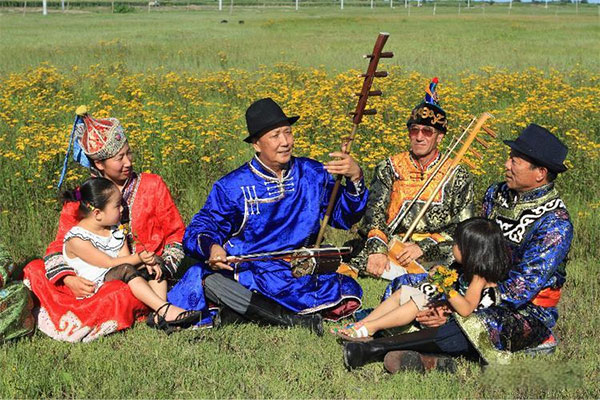Chinese Intangible Cultural Heritage - Mongolian Long Song (Urtiin Duu)
Introduction
The Mongolian Long Song, or "Urtiin Duu," is an integral part of traditional Mongolian music, renowned for its extended melodies, free rhythms, and profound emotional expression. It is not only an important artistic form in the daily lives and festive celebrations of the Mongolian people but also a significant way for them to express emotions and pass down history and culture. With its unique musical style and deep cultural connotations, the Long Song is celebrated as the "celestial sound of the grasslands."
History
The history of the Mongolian Long Song can be traced back to the nomadic culture of the Mongolian people, evolving from their life on the grasslands. The Long Song further developed during the Mongol Empire and reached a high artistic level during the Yuan Dynasty. During the Ming and Qing Dynasties, it continued to spread widely in Mongolian regions, becoming an important symbol of Mongolian culture. In 2005, the Mongolian Long Song was inscribed by UNESCO as a "Masterpiece of the Oral and Intangible Heritage of Humanity."
Regional Characteristics
The Mongolian Long Song is primarily popular in the Inner Mongolia Autonomous Region of China and other Mongolian-inhabited areas such as Mongolia. Grassland regions like Hulunbuir, Xilingol, and Alxa in Inner Mongolia are significant birthplaces and inheritance sites of the Long Song. The styles of the Long Song vary across regions, with some being bold and passionate, while others are gentle and melodious, all reflecting the Mongolian people's love for grassland life and reverence for nature.
Cultural Significance
The Mongolian Long Song is an important carrier of Mongolian culture. Its lyrics often depict grassland landscapes, nomadic life, heroic legends, and love stories, reflecting the lives, beliefs, and values of the Mongolian people. The melodies of the Long Song are free and expansive, with flexible and varied rhythms, showcasing immense artistic and cultural value. The Long Song is not only a spiritual anchor for the Mongolian people but also a symbol of their harmonious coexistence with nature.
Performing Arts
The performing art of the Long Song centers on singing, with vocalists often using a unique throat-singing technique (Khoomei) to convey the emotions and imagery of the songs. The melodies of the Long Song are extended, and the rhythms are free, allowing singers to improvise based on emotional changes. The accompanying instruments mainly include the horsehead fiddle (Morin Khuur) and the Tobshuur, whose tones complement the melodies of the Long Song, enhancing its expressive power.
Preservation and Innovation
As a Chinese Intangible Cultural Heritage, the Mongolian Long Song has received widespread attention and protection from the state and society. The government of the Inner Mongolia Autonomous Region and related cultural institutions actively promote the inheritance and development of the Long Song, nurturing a new generation of Long Song singers. At the same time, the Long Song continues to innovate, integrating modern musical forms and demonstrating renewed vitality.
Conclusion
The Mongolian Long Song is a treasure of Chinese ethnic minority culture, carrying the historical memories and cultural wisdom of the Mongolian people. By preserving and passing down this ancient art form, we can not only appreciate the unique charm of the Long Song but also gain a deeper understanding and appreciation of the traditional culture of China's ethnic minorities.







